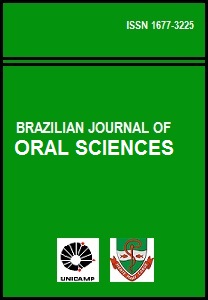Abstract
Aim: The aim of this study was to investigate the measurements of the mandibular canal in different patterns of reabsorbed alveolar ridges, using multidetector computed tomography in order to evaluate the relationship of the mandibular canal with the cortex of the mandible remains. Methods: Central cross-sectional slice of 30 edentulous alveolar ridges in the mandibular first molar region of otherwise healthy patients using multidetector computed tomography were analyzed. Horizontal and vertical lines were performed tangent to the corticals of the mandible and mandibular canal. Fisher’s exact test, Spearman test and linear regression were used for statistical analysis. Significance level for all statistical tests was 95%. Results: The height of the mandible and the distance of mandibular canal to superior cortical in males were significantly higher when compared with females (p<0.05). When the height of the mandibular bone was correlated to the classification of edentulous jaws, significant differences were observed when comparing the three types (III, IV and V) as well as between III and IV type. Conclusions: The results of the present study show that the measurements for dental implant placement in the posterior region of the mandible are affected by the different patterns of bone resorptions. It was also demonstrated the importance of the computed tomography in the process of planning dental implant placements.The Brazilian Journal of Oral Sciences uses the Creative Commons license (CC), thus preserving the integrity of the articles in an open access environment.
Downloads
Download data is not yet available.

